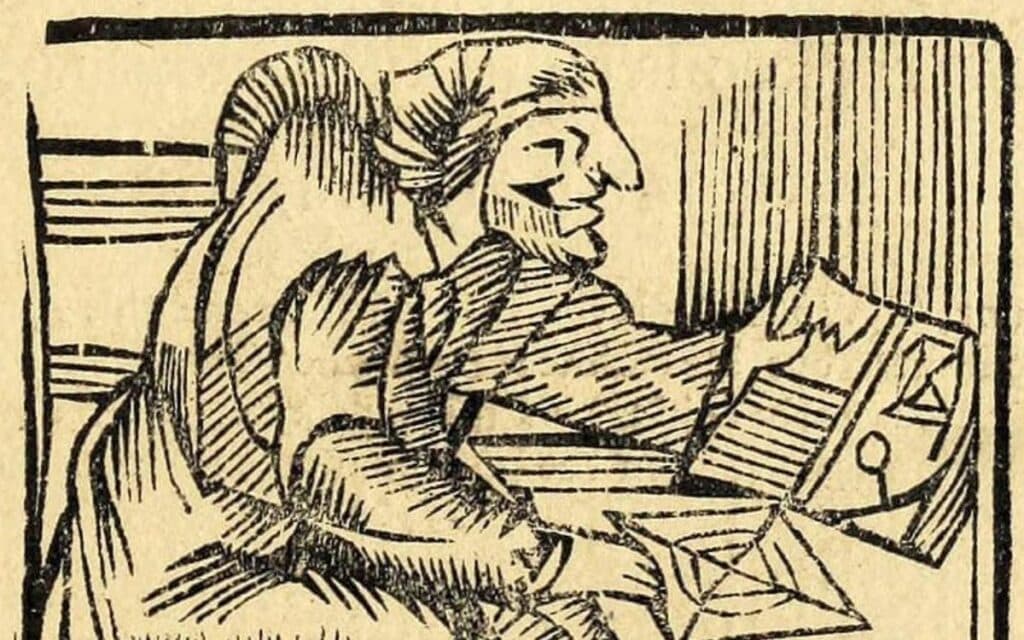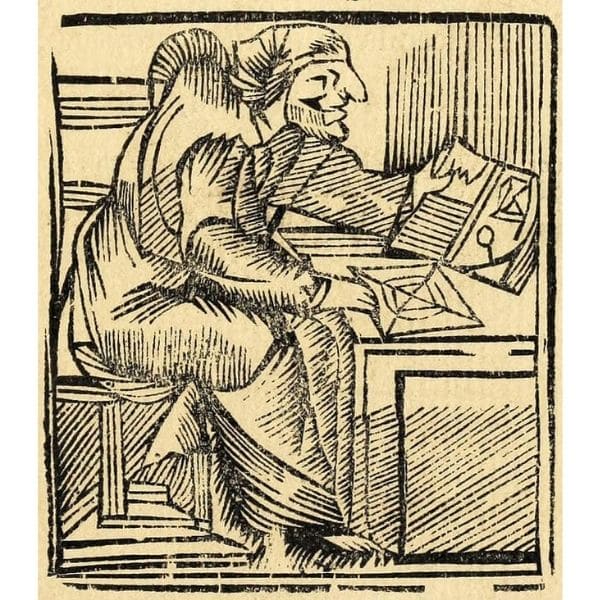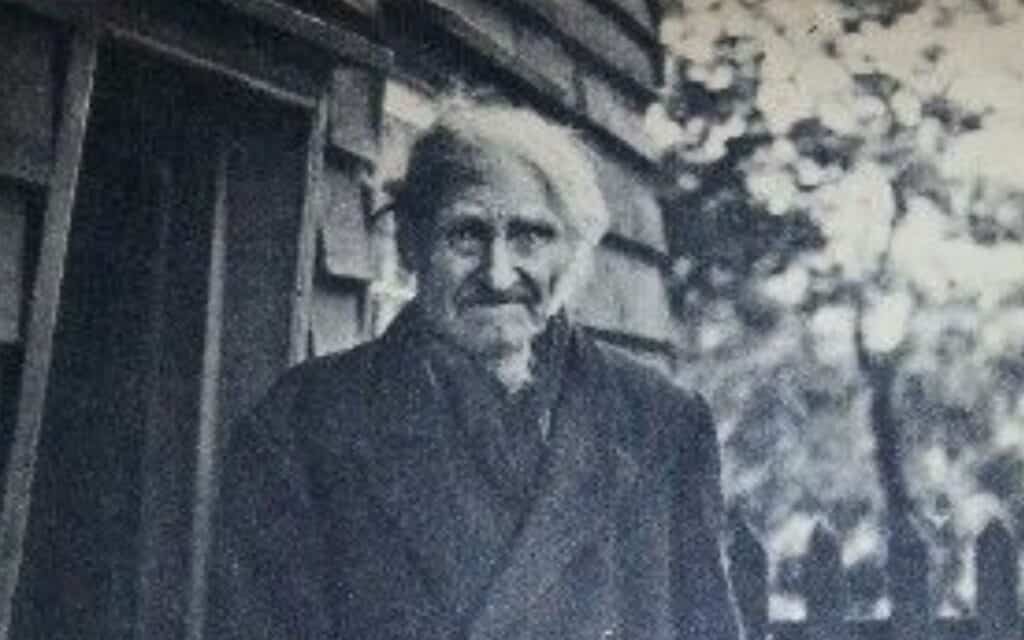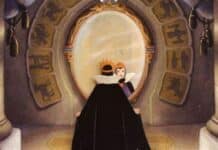Cunning Folk were practitioners of folk magic through the ages. CALLUM CAMPBELL tells us about the lives of three of the most interesting Cunning Folk in history, Mother Shipton, James Murrell and George Pickingill…

In the era of witch hunts and the like, you may think that anyone who claims to practice magic was in essence painting a crimson bullseye on their head and tie themselves to the stake. However, in many towns and villages across the British Isles distinctions were made between witches and cunning Folk.
The common people revered and respected cunning folk for their aptitude with healing magic, protection against “witches” and their talent with other magics that were in demand. Witches were hated because of the idea that they were cursing and hexing innocents.
Essentially they were two sides to the same coin, one set themselves up as an honest business and the other supposedly dwelt in seclusion and wrought dismay and death with devilish diabolism.
Cunning folk certainly must have led interesting lives, seeing people burned at the stake and brutally whipped, the skin peeling off their weathered backs and blooding spraying on the ground with every whipstroke. While they made gold and silver and were respected and appreciated for doing the same the exact same things other were punished for. Bearing this in mind, let’s take a look at three famous Cunning Folk.
Mother Shipton
Mother Shipton, born Ursula Sontheil, came into this world with an aptitude for the mystical. When she crawled from her mother’s womb, deformed and hunchbacked, storms were thundering and threatened to strike her North Yorkshire village, Knaresborough, into broken timber. However, with a giggle from the newborn, the storms were stated to cease and dwindle into nothing.
Despite the first act she committed being one of good due to her mother being young and unmarried, rumour spread that her mother was a witch and that Ursula had been conceived by Satan.
Due to this they were forced to survive in a small cave outside of town until, two year later, the Abbot of Beverley took notice and placed Shipton’s mother with the nuns of St Bridget and Shipton with a foster family in Knaresborough. Although her foster family loved her and she gained a close group of friends, Ursula was isolated from the community at large, likely due to her less than perfect appearance and the legacy of her mother.
During her childhood, strange occurrences followed Ursula like fleas on a dog. One day, in her infancy, her mother ran an errand and secured baby Shipton in her crib. Upon her return the door had been flung open and noises were being made that sounded like, “1000 cats in consort”. Ursula was not in her crib and after a frantic search the infant was found giggling on top of an iron bar mounted above the fire.
On another occasion she was travelling through town when she stumbled across a meeting of the chief members of the parish in the square. The men spotted her and boorishly mocked and bombarded her with insults such as “hag-face” and “ The Devil’s bastard”.

Unfazed, she stood and watched as the congregation’s clothing began to turn into all sorts of items, one yeoman’s hat morphed into a chamber pot and another’s ruff, a toilet seat. This culminated in the Master of the House beginning to leave his home to settle order only to be flipped onto his rump by a spiralling set of horns that had erupted out of his head and caught the doorframe. Cackling Ursula walked on and news spread that she should not be publicly mocked.
As she grew people began to accept and respect Shipton as she provided a useful service as a herbalist and soon became a valuable asset to Knaresborough.
As well as being able to heal wounds and eradicate disease she was skilled in resolving other problems as well; for example when a woman entered her shop, distraught that her smock and petticoat had been nicked, Shipton calmed her down and sent her home. The next day at the Market Square the thief strode up to the distraught woman and handed her her smock and petticoat, all the while singing “I stole My Neighbour’s smock and petticoat, I am a thief and here I show’t”.
As well as having a successful business, Ursula found love and married Toby Shipton, the local carpenter. Many said he married Ursula as the result of a love potion and when he died two years later the town suspected Shipton, and with the grief of her husband’s death and the town’s harsh judgement weighing her shoulders she fled into the woods, however still continued her business and was respected as a Cunning Woman, if feared too.
As her fame and popularity grew so did her talent and she began to make prophecies. “Water shall come over Ouse Bridge, and a windmill shall be set upon a Tower, and an elm tree shall sit at every man’s door. This was irrelevant until York, where the River and Bridge Ouse were situated, got running water. A pipe was put across Ouse Bridge carrying water to a windmill where it was piped to everyman’s door. Incredibly, the pipes were made of elm wood! After the success of this original prophecy plenty more were made, many hitting their mark, however a few not so much.
Mother Shipton died at the decently long lived age of 76 and this in the 16th century! She will remain one of the world’s most impressive soothsayers, predicting such events as the Spanish Armada and the Great Fire of London.
James Murrell
Born to parents Edward and Hannah Murrell, in the town of Rochford, Essex, in 1785, James Murrell was the 7th son of as 7th son, in folklore one who possesses this unconventional birth order is reputed to have a natural affinity for magic and innate powers of prophecy and healing.
This certainly heralded James’ future for soon enough he had set up his services as a Cunning Man in Rochford and was frequently called on for many problems that required his attention.
He had many talents at his disposal, exorcising spirits, killing witches, astrology, herbalism and healing of both humans and animals. As well as these skills he was a proficient manufacturer of charms and magical artifacts which aided him greatly in his profession, some among his collection being; a copper charm which indicates if the target is speaking honestly, a telescope which was stated to be able to see through walls, an amulet that aided in healing livestock of maladies and plagues as well as countless other pieces of magical paraphernalia such as mirrors, crystals, herbs and tomes of magical diagrams and writings.
As well as these more traditional methods of magic he was a pioneer too, noting that if one wanted to harm or kill a witch by heating a witch bottle in flames they would have to make a new one afterwards he constructed a iron cast witch bottle which could be continuously used if one utter a charm will heating the witch bottle.
This contraption was put to good use as, in the April of 1849, Murrell was commissioned to rid a girl of fits which were being inflicted by a local witch. He utilised his new invention to great effects, the girl was relieved of her fits and the witch never struck again.
Another occasion similar to this was when a girl spotted an old hag in a barn who proceeded to bewitch the girl so that she may bark like a mutt and caterwaul like a cat. Murrell was quick to the scene and deployed his iron witch bottle into flames. Shortly after the hag was found a few miles away with grievous burns all over her charred body.
Murrell’s acts were not only limited to killing witches he also cast spells to retrieve stolen money as when £10 in silver was snatched from Golding Spearman, the keeper of Tribily Fort canteen. Murrell muttered his magic and assured Spearman that his silver would return. Later the money was found and returned to Golding who was ecstatic in his praise of Murrell.
Murrell was held in high regard by the people of Rochford and beyond, stated to be “a white and lawful wizard, who warred against the powers of darkness with all his might” and that it was “no sin to employ the arts of a man like him”.
The local reverend appeared to be a personal friend of Murrell and often debated theology with him and admitted that his knowledge of scripture towered over his own. In 1860 James Murrell was buried in the grounds of St James the Less due to a death of natural causes. Murrell was remembered fondly within Rochford and continues to serve as an iconic figure of the Cunning profession.
George Pickingill

George Pickingill entered this world in 1816, in the Essex village of Candewon, where he became an influential figure for miles around.
Starting off with humble beginnings as a farm labourer he provided a highly demanded service as a Cunning Man, specialising in finding lost property and curing petty illnesses however his true talent lay in controlling lesser beings.
He would often summon animals to be hunted down, threaten to set white mice upon those who did not comply with his demands and could perform chores so fast it was speculated that he commanded a band of imps.
His knack for this branch of magic extended to humans, he had 9 malevolent witches at his beck and call and often used them to do his bidding.
As well as his mystical talents Geogre claimed he was the oldest man in England, however this statement was proven false but he did live to the age of 93 which is an impressive feat, especially at his time.
Unlike many other folk of his profession he did not charge for his labour, however accepted small donations. Perhaps the reasoning for this is that he coerced folk into giving him material goods, usually beer, for if they did not he would curse or hex them.
Due to the fact that Cunning Folk will not use their magic and rituals for nefarious purposes it is possible that Pickingill was simply a magician that had no moral standing in relation to his magic.
No matter his moral-magical standing Pickingill is still revered in the region of his birth, a local legend, and is an important part of English folk magic.
These mystical and powerful individuals were highly respected in their time, capable of solving problems no normal human could. Their traditions and practices still continue today, for even in modernity magic and wonder are still revered and sought after.







